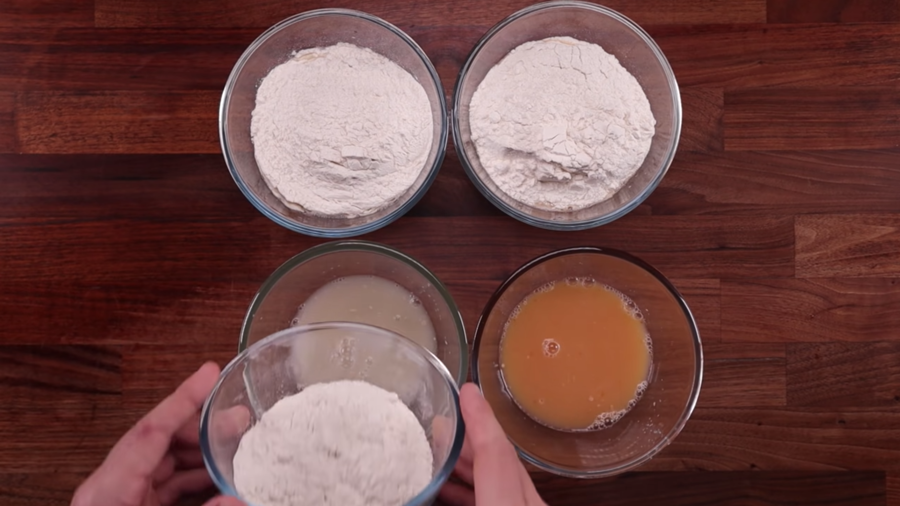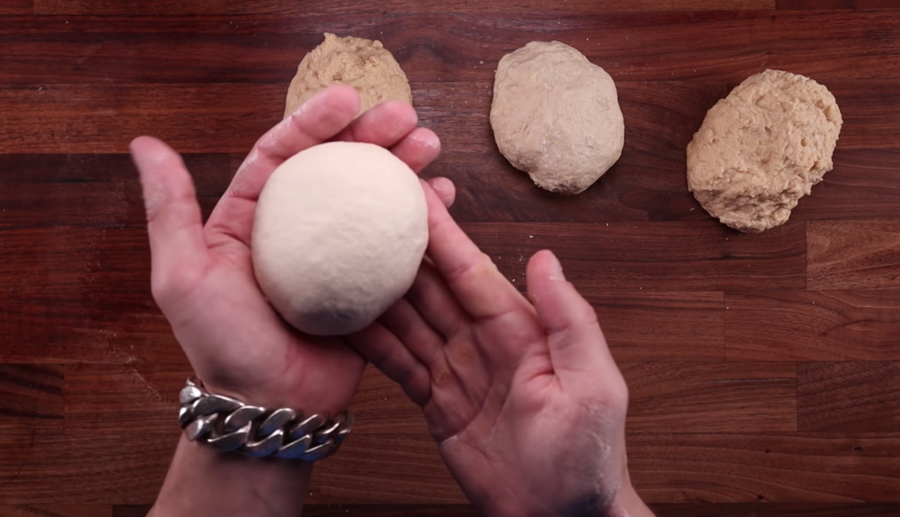Why might we put eggs in bread dough to bake bread? Why would a baker leave eggs out? What’s the difference between egg whites and egg yolks when baking?
The ChainBaker YouTube channel shares this methodical comparison video with four types of dough: No egg, whole egg, egg white only, and egg yolk only. All other ingredients—flour, water, yeast, and salt—are identical.
The step-by-step video explains and demonstrates clearly for beginners and may also be pretty interesting for experienced bakers. The man behind ChainBaker, known online as Charlie the YouTube baker, explains:
“…besides the nutritional benefits there are a few other good reasons to use egg in breadmaking. It makes the bread lighter and fluffier. The reason for that is the fat in the yolk that inhibits gluten formation just as any other fat would. This results in a looser dough that can expand and puff up more.
“The egg white on the other hand acts as a coagulant and sets the crumb making it bouncier and chewier in a good way.
“Crust is another part of the bread that is greatly affected by egg. It caramelises more and becomes crispier. Breads that contain egg should not be baked at very high temperatures as the crust may go too dark too soon.”
“Eggs also add flavour which works well in enriched dough. The yolk is the part that contributes to the flavour mostly as the white is quite bland by itself.
“But not everyone can or will eat egg. What alternatives are there? You can make bread dough light and fluffy simply by using any other fat rather than egg yolks. Sugar and milk will also act in a similar way. A roux like tangzhong makes bread super light and fluffy too. To achieve a bouncy crumb that an egg white would provide you could use some potato starch or cornflour in your flour mix.”
For sweet recipes, you can also replace one egg with 1/4 cup of applesauce, or a smashed banana in cakes and pancakes. Aquafaba, whipped chickpea liquid, is also a good substitute. From The Kitchn:
“Three tablespoons of aquafaba is equivalent to about one whole egg, while two tablespoons of aquafaba is equivalent to about one egg white. Keep in mind that a can of chickpeas yields about 1/2 to 3/4 cup of this liquid, so about eight to 12 tablespoons.”
Explore more about what happens if we leave an ingredient out if a recipe: Microwave cupcakes in a mug, an easy chemistry experiment.
Also, these 4 Levels food science videos and more eggs:
• How to make kawaii egg animals
• How to make ‘cloud eggs’
• Why do supermarket eggs look perfect?
Curated, kid-friendly, independently-published. Support this mission by becoming a sustaining member today.





